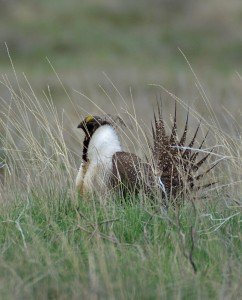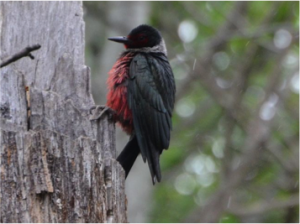Multi-species plans: A new approach to species recovery in Canada
This blog is written by guest blogger Sean Feagan.
The primary cause of the decline of wild species in Canada is the loss and degradation of habitat. Given this, the protection and management of habitat is central to the recovery of species at risk. The federal Species at Risk Act legislates the listing, protection and recovery of species at risk, including the prohibition of destruction of “critical habitat” on federal land, and establishes requirements for species recovery. Under SARA, recovery planning is a two-step process, which first involves the development of a Recovery Strategy that includes the identification of critical habitat, and a subsequent Action Plan to identify measures to protect or enhances the critical habitat.
To date, this recovery planning framework has largely been undertaken on a species-by-species basis. However, there is a trend towards multi-species recovery planning in which proposed management actions target multiple species at risk simultaneously. The Species at Risk Act Policies (2009) suggests multi-species recovery planning could increase the overall efficiency and/or effectiveness of conservation efforts, particularly in situations where multiple species co-occur in the same habitat, are affected by similar threats or are similar taxonomically. This suggestion is supported by economic analyses on multi-species planning which employed optimization models. Multi-species approaches may also streamline consultation efforts, reduce conflict between species at risk, address common threats, promote thinking on a broader scale, and reduce duplication of effort in conservation planning.

The Environment Canada Protected Areas Strategy (2011) outlines two main approaches to conservation:
- Stewardship initiatives promoting land management beneficial to wild species habitat; and
- The securing of land for the protection of biodiversity.
Within each of these approaches, multi-species action plans are currently being implemented for species conservation in Canada.
South of the Divide: A multi-species action plan dependent on private stewardship
The South of the Divide (SOD) Action Plan (2016) targets nine federally listed species at risk inhabiting the Milk River basin of southwestern Saskatchewan. The nine species, largely dependent on short-grass native prairie habitats, are Black-footed Ferret, Burrowing Owl, Eastern Yellow-bellied Racer, Greater Sage-Grouse, Loggerhead Shrike, Mormon Metal Mark, Mountain Plover, Sprague’s Pipit and Swift Fox. Critical habitat within the region was first defined independently for each species, then these areas were combined into a single layer.
The action plan employs spatial analyses to prioritize and direct conservation efforts within the region. A spatial threat analysis was performed to classify the overlapping area of the species’ critical habitat into three threat classes (low, medium, high) by assessing the combined impact of existing and potential threats (e.g. industrial activity, roads, capability to support agriculture) in the region. Lands within and in proximity to the provincial community pastures, and the region between the east and west blocks of Grasslands National Park were identified as high threat areas. The action plan also contains a suite of conservation activities to promote the recovery of these species.
Parks Canada Multi-Species Action Planning
Under the Canada National Parks Act, the maintenance or restoration of ecological integrity is the first priority in all aspects of park management, a key element includes maintaining the composition and abundance of native species, notably species at risk. Within their 2013-14 Report on Plans and Priorities, the Parks Canada Agency stated they will work to recovery priority species at risk through the implementation of site-based (eg. for a particular park or conservation area) action plans using the multi-species approach.
Eleven site-based multi-species action plans have been finalized for National Parks, National Marine Parks, and National Historic Sites throughout Canada, with an additional twelve plans proposed. These action plans target species differ taxonomically, but together exist within the site. These plans focus on species listed under SARA, by COSEWIC, under provincial legislation, or that are of particular significance to indigenous peoples.
The action plans assess the potential of the site to contribute to the national recovery of each species, identify of critical habitat within the site, list monitoring needs for each species, and include recovery activities aimed to sustain or recovery species populations within the site. While some of the suggested management activities target single species, others will potentially benefit multiple species. For example, within the proposed Multi-species Action Plan for Jasper National Park, controlled burns to maintain early successional post-fire communities will promote multiple species at risk, including Common Nighthawk, Half-moon Hairstreak, Lewis’s Woodpecker, Olive-sided Flycatcher, and Whitebark Pine
Conclusion
Multi-species planning represents a potentially effective tool for species conservation. The effectiveness of these plans will be assessed through their implementation, ensuring these policy remain adaptive and evidence based. Hopefully they will act to promote the preservation and recovery of Canada’s many fascinating and beautiful species at risk!





